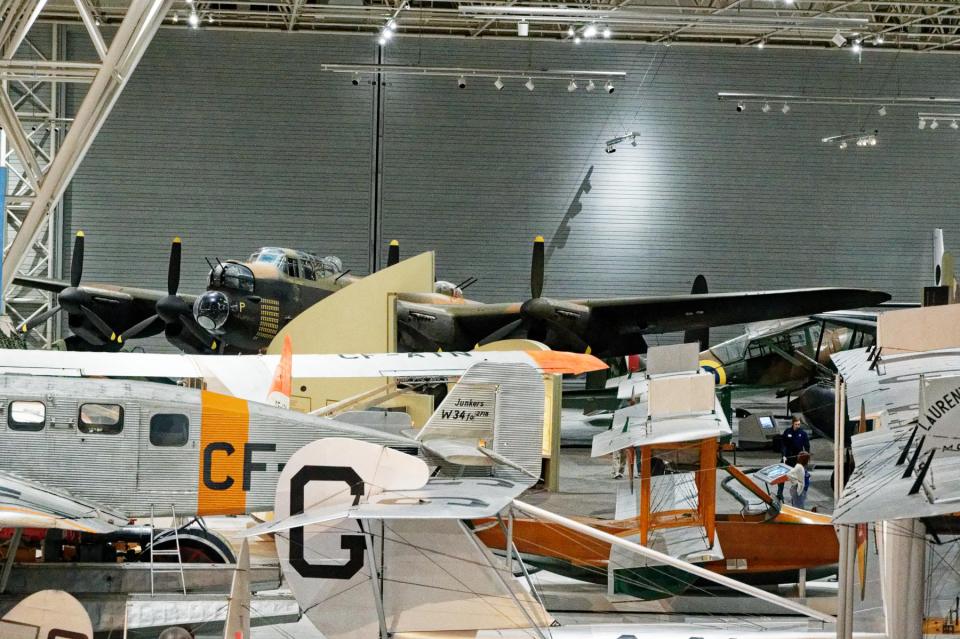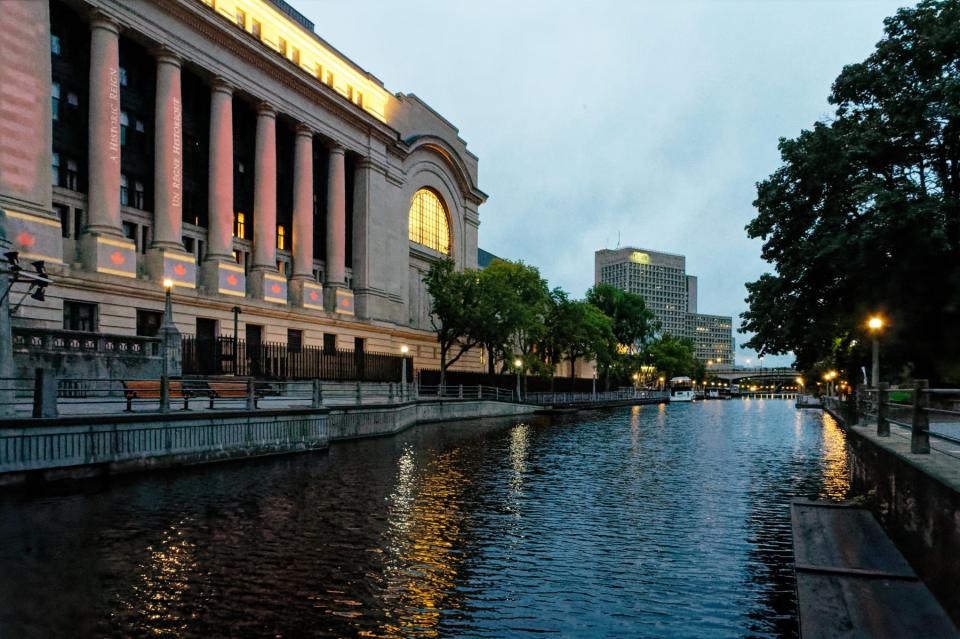Sunday 25 September 2022 – We might have done with Montréal, but Montréal (and fate) had not done with us. As I mentioned in my last entry, the itinerary we’re following has evolved over the course of three years and, as a result, has produced some wrinkles. The order of cities was one; the timing of this morning was another. We had grown rather alarmed at the prospect of an 0530 pickup at the hotel – particularly when we saw that the flight that this was to take us to was not at 0800 as originally specified, but 0855. So we had a bit of a back-and-forth with Discover Holidays, who are in charge of local details, and they agreed that an 0630 pickup was OK. 0630 is not good, but it’s a whole lot better than 0530.
0530, however, was, of course, the time we had to set the alarm for. Having done so, and heaved ourselves up to face the rigours of the day, a text arrived at 0553 from those nice people at Air Canada, telling us that our flight was delayed until 1045, “due to a technical problem with the aircraft”, and would be departing from Gate A9.
Hah.
It was too late to change the timing of the pickup, so we got ourselves ready and checked out before 0630. Unsurprisingly, we were alone in the hotel lobby, apart from the receptionist and a chap in a cap. Equally unsurprisingly, it turned out that he was our driver, André (an Italian-Canadian ex-truck driver with a New York accent), and he took us out to the car.

Perhaps a bit OTT for two people and two suitcases to go to the airport, but, hey,

it perks the day up a bit. So did the sunrise.

Our hopes that perhaps fate was making up for the mix-up with the early start were at first slightly lowered when the Air Canada machinery wouldn’t take our checked-in bags and then dashed when we headed for security.

You’ll remember (of course) that we were heading for an A gate, and you can just make an A out in the distance. When we got near it, though,

we saw that there was a huddled mass of humanity between us and it. This was Montréal, we thought, having the last laugh. Actually, it was only about a 35-minute queue and then we were free! Noticeboards were still talking about our flight leaving at 0855 from gate A1, but we smiled, knowing that Air Canada had given us the skinny of the new gate and time. So we sat at Gate A9, not worrying at all about our almost total isolation because We Knew The Score.
At about 40 minutes before the scheduled departure, though, we began to worry that We Didn’t After All Know The Score, so we hurried off to Gate A1, where AC371 (yes, our flight) was still showing as departing. A lady at an adjacent Air Canada desk saw us and the uncertainty we were radiating and shouted out that the flight was no longer going from Gate 1, but was just about to board at Gate 15. So nice of Air Canada to contribute to our exercise regime.
The rest of the journey was fine, involving as it did a decent but not excessive amount of gin and Pringles. It was a little bumpy towards the landing

due to a not insignificant wind. We arrived in Winnipeg (for that was the correct destination) at around midday; by the time we arrived at the carousel our bags had just appeared and we had just a short (but slightly puzzling) walk to our airport hotel, the sumptuously named Lakeview Signature by Wyndham (which is not sumptuous at all, and has a view only of the airfield, but otherwise appears to be perfectly workmanlike). Our room was ready, and the organisers of this next segment of our holiday were obviously on the ball, as there was a board in the hotel lobby telling us where we had to be and when for the introductions and briefing.
So. Why are we in Winnipeg, a westward step in our otherwise eastward progress, significant enough to warrant a change in time zone?? You’ll find out if you keep reading these pages.
In the meantime, we had some hours to kill, and Jane had spotted that Winnipeg airport is home to the Royal Aviation Museum of Western Canada. This seemed to be only a couple of minutes’ walk away, but the hotel reception virtually insisted that we take the hotel shuttle bus. I think this was to make the driver feel part of the team, because it was a ridiculously short drive. We were greeted by a charming lady called Hedie and welcomed to the museum.
Which was not huge, but really interesting.

Assembled here is a collection of those things that are significant in Canada’s aviation history, particularly in the development of the bush plane. For example, the first purpose-built example, the Fairchild AC71

had great capabilities for all those things that bush planes needed to do (e.g. land on and take off from water). It suffered a little from the fact that the pilot’s ability to see forwards was very limited because the cockpit was set so far back, so it never entered commercial production.
The museum also gave me a chance to show you another one of them Fokkers, in this case a Super Universal.

There are many curiosities on display: an example of a sesquiplane, something I’d never heard of before – a plane with one and a half wings;

a nuclear bomb, which I’m glad the organisers rendered inert before displaying;

a replica of the Avro Canada VZ-9 Avrocar, a top secret US Air Force funded attempt to create a supersonic fighter capable of vertical take off and landing (it was underpowered, unstable and cancelled, having never got more than a metre into the air);

the Froebe Helicopter, designed in 1937, built from salvaged truck parts and featuring design points that are still in use on today’s helicopters,

but underpowered and hence also not able to rise higher than one metre from the ground; the Vedette, the first attempt at a boat that could fly;

and – my favourite – the Canadair CL-84 Dynavert.

As soon as I saw this beast I thought “Bell Boeing Osprey” (for those of you not familiar with it, here’s a picture of one I took at Farnborough Air Show some years ago)
and, indeed, the Dynavert was a predecessor – well ahead of its time, having first flown in 1965, a quarter of a century before the Osprey (though it never found a buyer so was cancelled in 1974).

I particularly like the little helicopter rotors on the tail.
There were many other, more serious, exhibits as well, but I found these the most engaging and we spent a happy hour at the museum in one of those lovely bits of serendipity that contribute so much to life’s pleasure.
Rather than attempt to call up the hotel’s shuttle bus for a return journey, we dared the walk back unaided – the hotel is just under the control tower, so it wasn’t exactly a major expedition. So we stepped out – into an astonishing wind – and fought our way home against it. Apparently it’s been windy here all month.

And this brings you bang up to date. The sunset here is as interesting as the sunrise this morning back in Montreal

and we have about 90 minutes to wait until we get our briefing on the next few days. All we know is that we have to be up, packed, checked out and breakfasted in time to leave the hotel at 0700 tomorrow. So there’s no chance I will report back today about what we learned at the briefing and what we’re up to over the coming days – you’ll have to come back tomorrow to find out more. See you then!

































